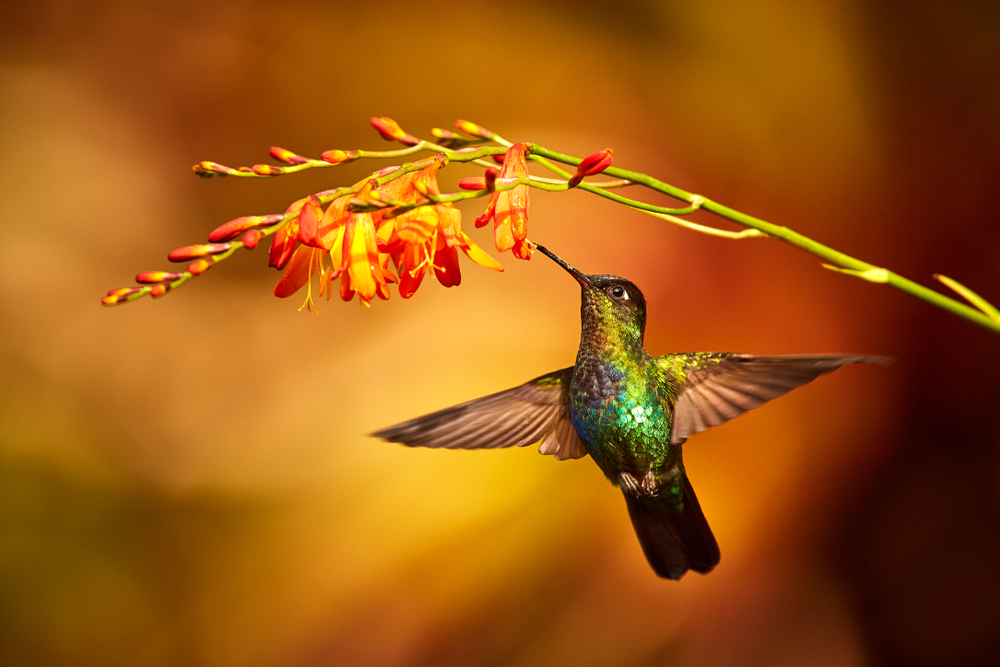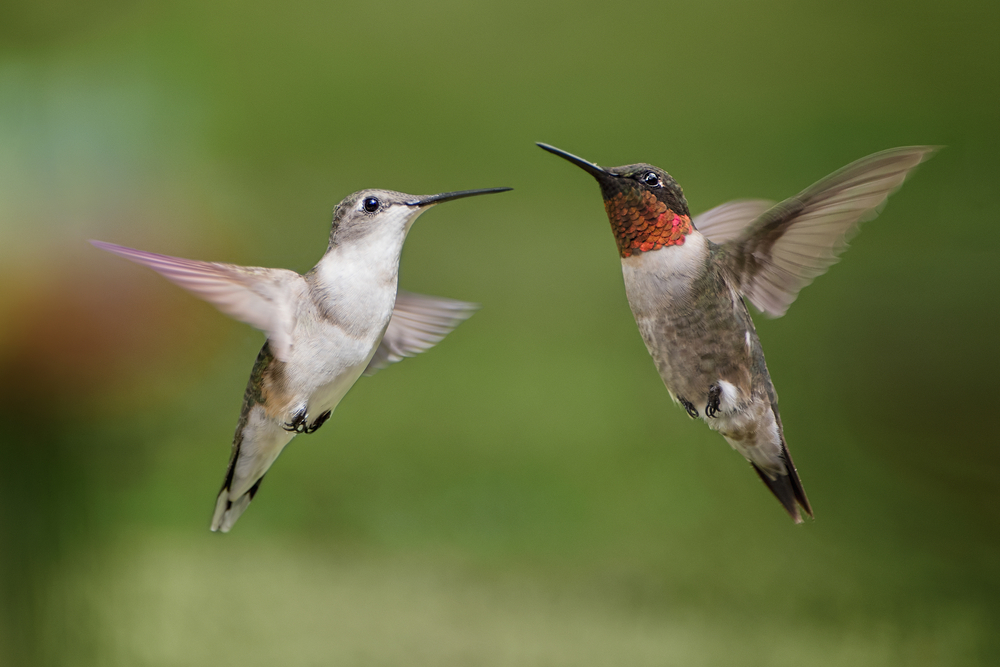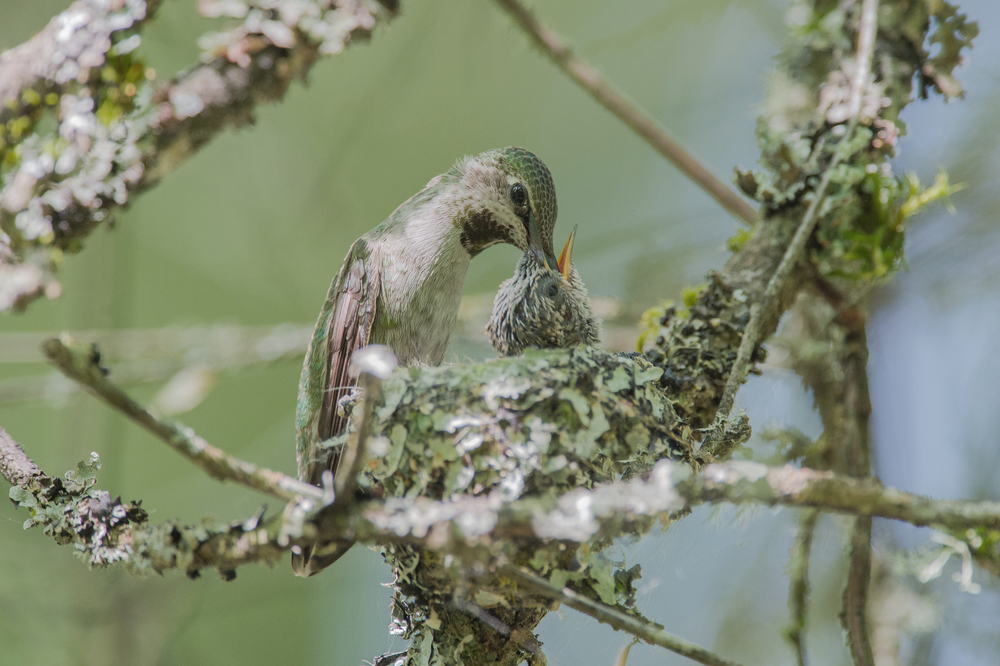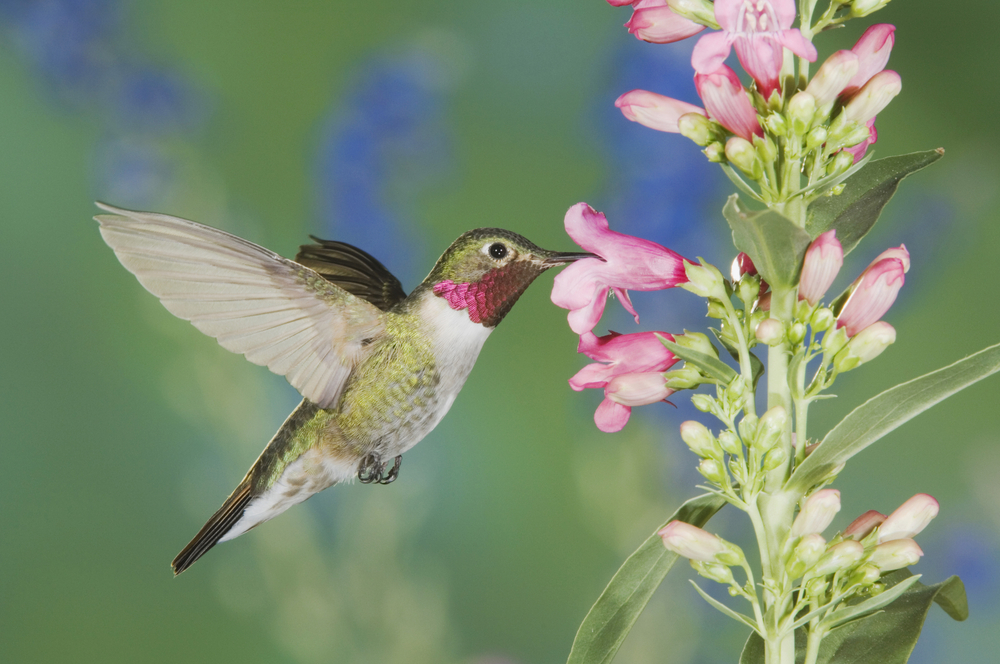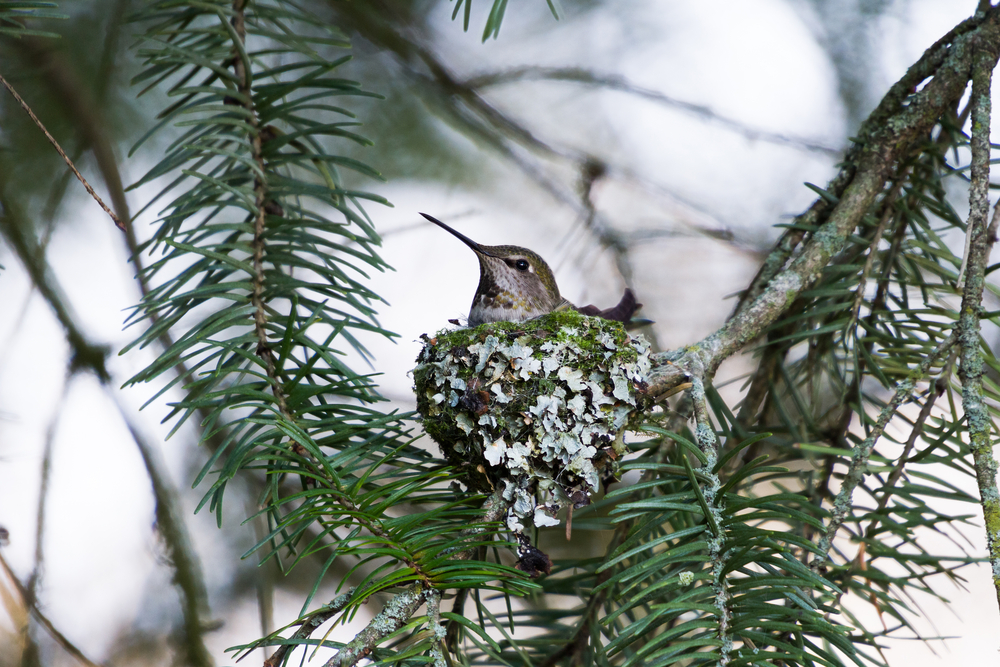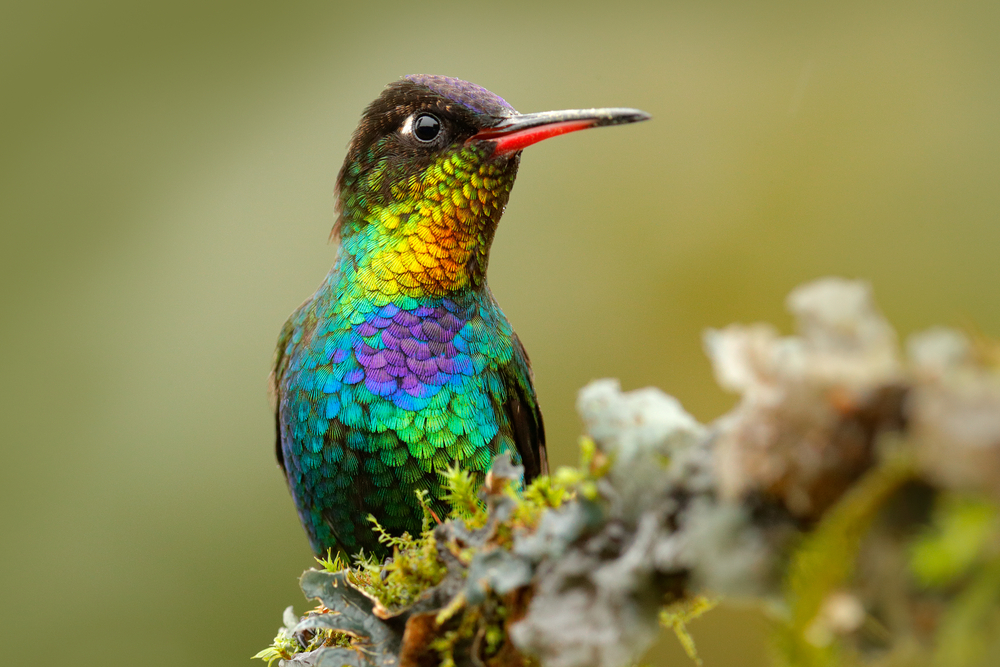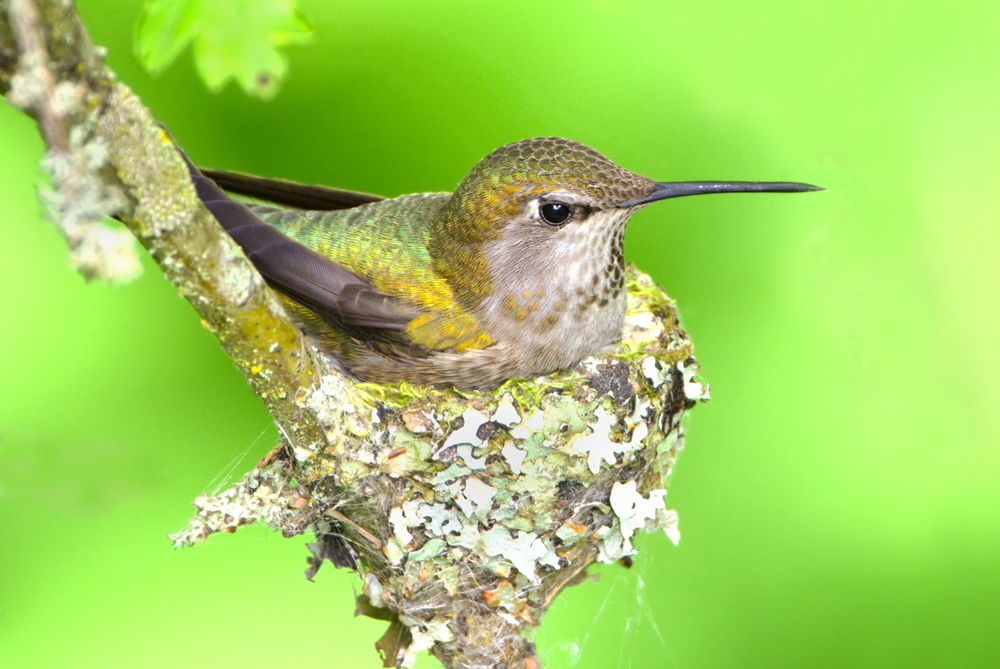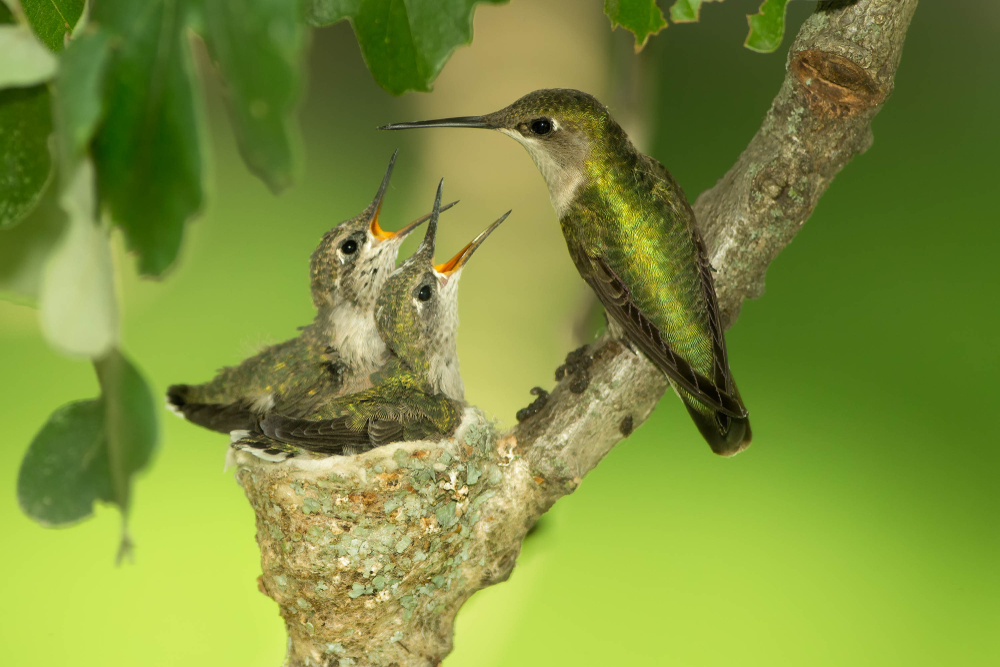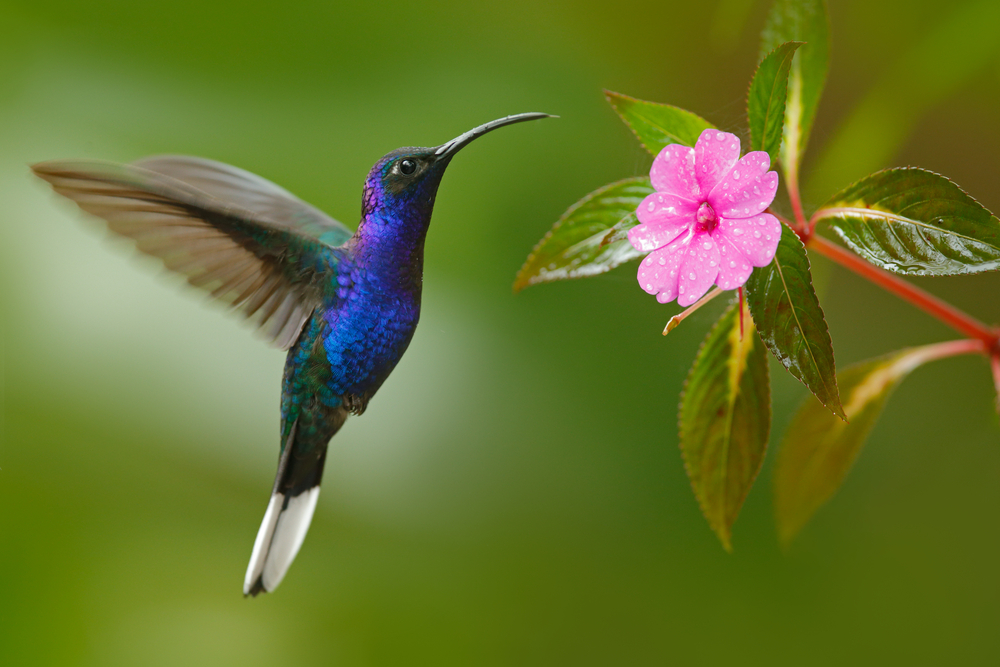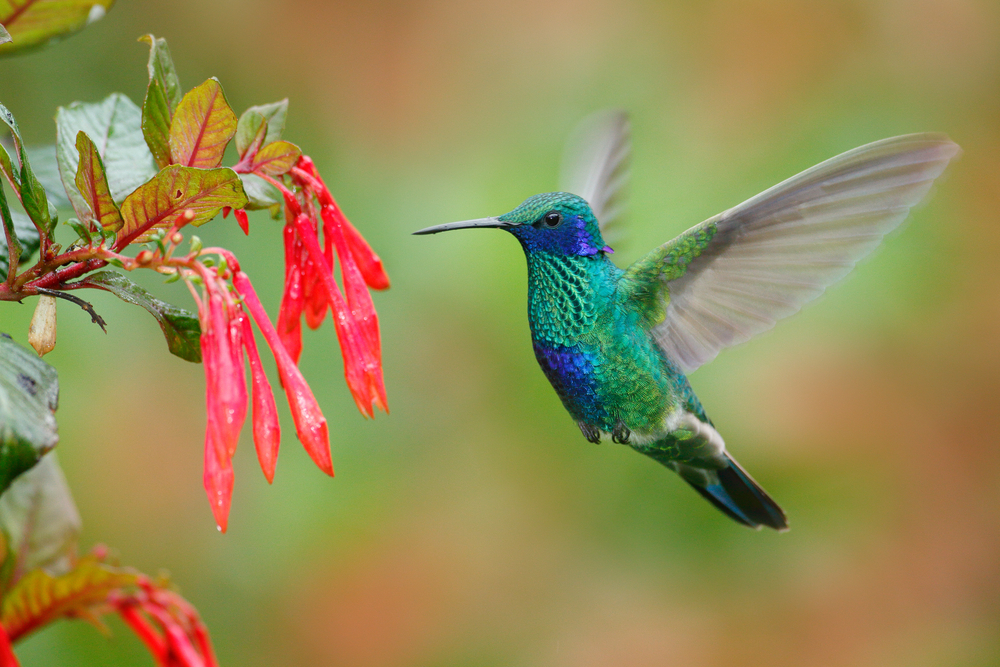About
The Hummingbird, belonging to the Trochilidae family, is a fascinating avian species found exclusively in the Americas, from Alaska to Tierra del Fuego. With over 300 species, they’re among the smallest birds, with some measuring as little as 5 cm in length. Scientifically known as Trochilidae, they’re a diverse group within the Animal Kingdom’s phylum Chordata, class Aves, which includes other bird species like eagles and sparrows.
These birds are renowned for their remarkable flying abilities, including hovering, flying backward, and even upside down. Their wings beat rapidly, creating the characteristic humming sound from which they derive their name. Hummingbirds have iridescent feathers, which can appear to change color depending on the angle of light, making them visually stunning creatures.
Hummingbirds are nectarivores, feeding primarily on the nectar of flowers, which they collect using their specialized long, narrow bills and extendable, tube-like tongues. They also consume small insects and spiders for protein, making them important pollinators and contributors to ecosystem health. Their high metabolism requires them to consume large amounts of nectar daily, leading them to visit numerous flowers and facilitating cross-pollination.
Conservation Concerns
Despite their remarkable adaptations, hummingbirds face several conservation threats, primarily due to habitat loss, climate change, and human activities. Deforestation, urbanization, and agricultural expansion reduce available habitat and disrupt migratory routes, impacting hummingbird populations worldwide.
While not all species of hummingbirds are currently assessed individually on the IUCN Red List, many are believed to be at risk due to habitat degradation and climate change. Conservation efforts focused on preserving and restoring habitats, creating protected areas, and promoting sustainable land-use practices are essential for ensuring the survival of these unique birds.
Furthermore, initiatives to raise awareness about the importance of preserving biodiversity and providing resources for hummingbirds, such as planting native flowering plants and maintaining habitat connectivity, are crucial for their long-term conservation. Continued research and monitoring are necessary to assess population trends and implement effective conservation strategies to protect hummingbirds and their ecosystems.
Physical Characteristics
Hummingbirds, belonging to the family Trochilidae, are among the smallest and most vibrant birds in the world, known for their ability to hover in mid-air by flapping their wings at high frequencies. They are native to the Americas and are highly admired for their iridescent colors and rapid flight. Here’s an overview of the physical characteristics of hummingbirds:
Size
- Body Length: Hummingbirds range in length from about 2 inches (5 centimeters) for the smallest species, such as the Bee Hummingbird, to about 8.7 inches (22 centimeters) for the largest species, like the Giant Hummingbird.
- Weight: The weight of hummingbirds can vary from as little as 0.07 ounces (2 grams) for the smallest species to up to 0.7 ounces (20 grams) for the larger species.
Physical Characteristics
- Beak and Tongue: Hummingbirds have long, slender beaks that allow them to reach deep into flowers to access nectar. Their beaks vary greatly in length and shape, adapted to specific types of flowers. Inside the beak, their long, extendable tongue is forked and rolls into a tube for sipping nectar.
- Feathers: The iridescent feathers of hummingbirds are one of their most striking features, creating brilliant flashes of color that change with the angle of light. The colors are not due to pigment but rather to the microscopic structure of the feathers, which refracts light.
- Wings: Their wings are unique among birds, attached to the body only from the shoulder joint, which allows them to rotate almost 180 degrees in all directions. This unique structure enables them to fly not only forward but also backward and to hover in place by flapping their wings in a figure-eight motion.
- Body Shape: Their bodies are compact and streamlined, with a proportionally large chest to accommodate powerful flight muscles. This muscular system makes up a significant portion of their body weight, enabling their agility and speed in flight.
- Legs and Feet: Hummingbirds have very small legs and feet, which are not designed for walking but are adequate for perching. The legs are short, and the feet are zygodactyl, with two toes facing forward and two backward, providing a strong grip for perching on branches or flowers.
Coloration
- Color Variations: The coloration of hummingbirds varies widely among species, with vibrant greens, blues, reds, and purples commonly observed. Males are usually more brightly colored than females, using their brilliant hues to attract mates.
Hummingbirds are a marvel of evolution, with their physical characteristics finely tuned for their unique lifestyles. From their incredible flight capabilities to their role as pollinators, hummingbirds are an essential part of the ecosystems in the Americas.
Reproduction
The reproductive cycle of hummingbirds, known for their agility and vibrant plumage, is a remarkable process influenced by seasonal changes and availability of nectar-rich flowers. Here’s an overview:
Breeding Season: Hummingbirds breed during the spring and summer months when environmental conditions are conducive to nesting and raising young. The timing varies depending on the species and geographic location.
Courtship Displays: Male hummingbirds perform elaborate aerial displays to attract females, showcasing their iridescent plumage and agility. These displays often involve intricate flight patterns, vocalizations, and flashy throat feathers known as gorgets.
Mating Behavior: Once a female selects a mate, copulation occurs, typically lasting only a few seconds. Hummingbirds have a brief but intense mating ritual, with males often pursuing females aggressively before mating.
Nest Building: Female hummingbirds construct small, cup-shaped nests using a variety of materials such as plant fibers, spider silk, and moss. Nests are typically located in trees or shrubs, camouflaged among foliage to protect them from predators.
Egg Laying: After completing the nest, the female lays one or two eggs, usually no larger than a pea. The eggs are incubated for about 14 to 21 days, depending on the species, with the female primarily responsible for keeping them warm.
Incubation and Development: During incubation, the female sits on the eggs to regulate their temperature and ensure proper development. Once the eggs hatch, both parents take turns feeding the hungry hatchlings a diet of regurgitated nectar and insects.
Fledging: Hummingbird chicks grow rapidly, reaching adult size within a few weeks. Once fully feathered and capable of flight, the young hummingbirds leave the nest, or fledge, under the watchful eyes of their parents.
Parental Care: After fledging, the parents continue to feed and protect their offspring, teaching them essential skills such as foraging and navigating the environment. Juvenile hummingbirds gradually become independent but may remain in the vicinity of their parents for some time.
Life Cycle Dynamics: Hummingbirds exhibit remarkable adaptability and resilience, thriving in diverse habitats ranging from tropical rainforests to arid deserts. Their reproductive success is closely tied to the availability of nectar-producing flowers and suitable nesting sites, highlighting the importance of habitat conservation for these fascinating birds.
Understanding the reproductive cycle of hummingbirds provides valuable insights into their behavior and ecology, enabling conservation efforts aimed at preserving these charismatic and essential pollinators.
Lifespan
Hummingbirds are small, colorful birds known for their remarkable agility in flight and their unique ability to hover in mid-air. Understanding their lifespan and the threats they face is crucial for conservation efforts and habitat management.
Lifespan in the Wild: In the wild, the lifespan of a hummingbird varies depending on species, environmental conditions, and predation pressures. On average, most hummingbird species have relatively short lifespans compared to other bird species, ranging from 3 to 5 years. However, some individuals may live longer, with anecdotal reports of hummingbirds reaching up to 10 years or more in exceptional cases.
Lifespan in Captivity: In captivity, hummingbirds may have the potential to live longer lives compared to those in the wild, provided they receive appropriate care, diet, and veterinary attention. However, keeping hummingbirds in captivity is not recommended unless authorized by wildlife authorities and carried out by experienced professionals due to their specialized dietary and environmental needs.
Threats to the Hummingbird:
- Habitat Loss: Habitat loss and fragmentation due to deforestation, urbanization, and agricultural expansion are significant threats to hummingbirds. Loss of native vegetation deprives hummingbirds of essential nectar sources, nesting sites, and insect prey, leading to declines in populations.
- Climate Change: Climate change poses various challenges to hummingbirds, including shifts in flowering patterns, altered precipitation regimes, and changes in temperature. These disruptions can affect the availability of nectar-bearing flowers and disrupt the timing of migration and breeding, impacting hummingbird populations’ health and reproductive success.
- Predation: Hummingbirds face predation from various animals, including larger birds, snakes, and mammals. Nest predation by species such as snakes, squirrels, and predatory birds can significantly impact nesting success and reduce hummingbird populations.
- Pesticides and Pollution: Exposure to pesticides, herbicides, and other chemical pollutants can harm hummingbirds directly or indirectly by contaminating their food sources, such as nectar and insects. Pesticides used in agriculture and residential areas may be toxic to hummingbirds and disrupt their physiological functions.
- Competition: Competition with invasive species, such as non-native hummingbirds and aggressive nectar-feeding birds, can negatively affect native hummingbird populations by outcompeting them for food and nesting sites.
- Human Activities: Human activities, such as habitat disturbance, recreational development, and the installation of artificial structures (e.g., communication towers, wind turbines), can pose threats to hummingbirds through habitat degradation, collisions, and other disturbances.
Conservation efforts to protect hummingbirds include habitat restoration, establishment of protected areas, promotion of native plant gardening, reduction of pesticide use, and public education on hummingbird-friendly practices. Additionally, ongoing research on hummingbird ecology and behavior is essential for developing effective conservation strategies to safeguard these remarkable birds for future generations.
Eating Habits
Hummingbirds are renowned for their unique feeding behaviors, characterized by their ability to hover in mid-air while feeding on nectar from flowers. Understanding their eating habits illuminates their specialized adaptations for obtaining energy from floral nectar and supplementing their diet with other sources of nutrition. Let’s delve into the eating habits of hummingbirds.
Diet: Hummingbirds have a primarily liquid diet consisting of flower nectar, which serves as their main source of energy. In addition to nectar, they also consume small insects and spiders to supplement their diet with proteins, fats, and essential nutrients. Hummingbirds are known to consume tree sap, fruit juices, and even pollen on occasion.
Feeding Behavior:
- Nectar Feeding: Hummingbirds have long, specialized bills and extendable, tubular tongues that allow them to reach deep into flowers to extract nectar. They hover in front of flowers using rapid wing beats, inserting their slender bills into the floral corolla to access the nectar within.
- Insect Foraging: In addition to nectar, hummingbirds catch insects and spiders in flight or by gleaning them from leaves and branches. They may also visit spider webs to collect trapped insects.
- Sap and Fruit Consumption: Some hummingbird species occasionally consume tree sap by puncturing the bark with their bills to access the sugary liquid. They may also feed on ripe fruits for additional nutrients.
Energy Requirements:
- Hummingbirds have high metabolic rates and require substantial energy to support their hovering flight and rapid wing beats, which can range from 50 to 80 beats per second.
- To meet their energy needs, hummingbirds must consume large amounts of nectar, visiting numerous flowers throughout the day. They may feed multiple times per hour and can consume up to twice their body weight in nectar daily.
Migration and Feeding Patterns:
- During migration, hummingbirds rely heavily on nectar-rich flowers to fuel their long-distance flights. They time their migrations to coincide with the blooming of flowers along their route.
- Hummingbirds may also use backyard feeders filled with sugar water as supplemental food sources, especially during periods of low flower availability.
Conservation Implications:
- Maintaining diverse and abundant flowering plants is essential for supporting hummingbird populations, as they depend heavily on floral resources for food.
- Providing artificial nectar feeders can help supplement natural food sources, but it’s essential to maintain proper hygiene to prevent the spread of diseases among hummingbirds.
Uniqueness
Hummingbirds, members of the family Trochilidae, are among the smallest and most specialized of birds, known for their incredible flying abilities and role as pollinators. Here are some key aspects that make hummingbirds unique:
Incredible Flight Skills: Hummingbirds are the only birds capable of hovering in mid-air for extended periods, thanks to their extremely rapid wing beats, which can reach up to 80 beats per second in some species. They are also able to fly backwards and upside down, skills that require precise and rapid adjustments in wing motion.
High Metabolism: To support their intense flying ability, hummingbirds have an extraordinarily high metabolism. They must consume about half of their body weight in sugar each day, feeding on nectar from flowers and small insects and spiders for protein, vitamins, and minerals. To conserve energy, they can enter a state of torpor at night, drastically reducing their metabolic rate.
Specialized Bill and Tongue: Many hummingbirds have long, specialized bills that are adapted to extract nectar from specific types of flowers. Their tongues are equally specialized, capable of rapid extension and retraction, and have a forked, tube-like structure that allows them to lap up nectar efficiently.
Vibrant Plumage: Hummingbirds are known for their vibrant and often iridescent plumage, which can shift in color with changes in light and perspective. This striking coloration is used for attracting mates and also serves as camouflage among flowers.
Unique Breeding Behaviors: Male hummingbirds often perform elaborate aerial displays to attract females. These may include diving from great heights or performing complex aerial maneuvers. After mating, females alone build the nest and raise the young, often producing two pea-sized eggs, the smallest bird eggs in the world.
Territoriality: Despite their small size, hummingbirds are often fiercely territorial, especially in areas where nectar sources are concentrated. They will aggressively defend their feeding territories from other hummingbirds and sometimes even much larger birds.
Pollination Role: As they move from flower to flower to feed, hummingbirds play a critical role in pollination. Their interactions with plants are so close that many flowers have evolved shapes and colors that specifically attract hummingbirds, exhibiting mutualism between species.
Wide Geographic Range: Hummingbirds are primarily found in the Americas, from Alaska to Tierra del Fuego, but the majority of the 300-plus species are found in Central and South America, especially in the Andean regions, which is a center of hummingbird diversity.
The combination of their aerodynamic prowess, metabolic demands, and ecological roles makes hummingbirds not only unique among birds but also a fascinating study of adaptation and survival strategies in the animal kingdom. Their existence highlights the intricate connections within ecosystems and the importance of conservational efforts to preserve these dynamic creatures and their habitats.
Sources
- Burnie, David & Wilson, Don, Animal, Smithsonian Institute, Washington DC.
- Hickman et al, Integrated Principle of Zoology, McGraw Hill, Boston.



































































